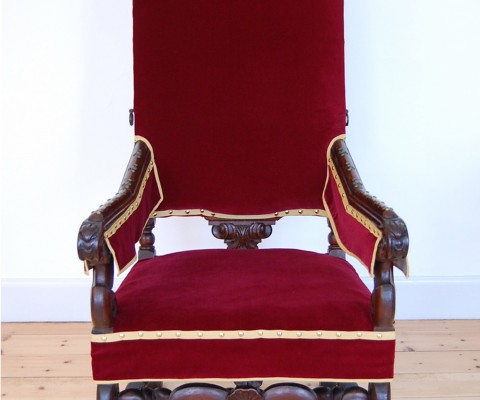A 17th Century Slapstick Chair
A 17th Century Slapstick Chair
Our exhibition series – Conservation in Focus – concentrates on changing, newly-restored objects and gives visitors a chance to see the result of the conservators’ work with preserving works of art for the future and offers an insight into the process behind.
The armchair is ingeniously constructed to grasp a guest with concealed tentacles in the armrests. The immobilized person could then be soaked by water running from a vessel in the back of the chair through channels in the seat. When the victim had been released and was getting up from the chair, a trumpet concealed in the seat would toot.
The chair is somewhat of a mystery to us, as we do not know its origin or its daily life in the sense that it has not been described in sources. In this way, we have to use our imagination to recreate the practical jokes that it enforced on royal guests.
The chair appears for the first time on the inventory list of the Kunstkammer in 1673, is missing on the list of 1737 and then reappears in 1877. It is likely that the chair was standing at Copenhagen Castle and later was transferred to Rosenborg. The National Museum houses a similar chair.
The red velvet cover that is currently on the chair is of recent date. Under the cover you will find the original waxed cloth cover, which is highly unusual since it has not been customary to preserve covers.
The original cover is waxed linen cloth. To protect the original cover the chair was adapted with a protective covering of patterned red velvet. This secondary cover is identical to the current one in shape and fitting.
The exhibition lets you see the water tank and pipes in the back-construction, the spouts with water and the mechanics in the arm rest.

 Dansk
Dansk
 English
English
 Deutsch
Deutsch

